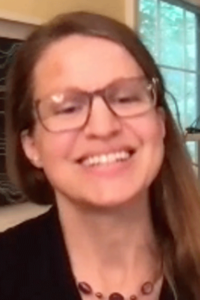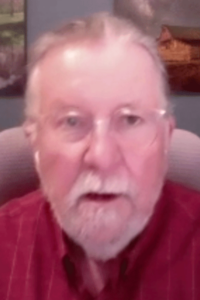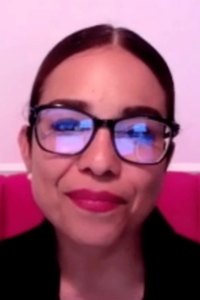Against the backdrop of the COVID-19 pandemic, three Scientific Sessions presenters addressed issues surrounding the communication of risk from their three distinct perspectives: as an infectious disease epidemiologist, a journalist, and a researcher.

Their presentation, Communication of Risk in the Era of COVID-19—Public Health and Public Trust, was originally presented Monday, June 28, and can be viewed by registered meeting attendees at ADA2021.org through September 29, 2021. If you haven’t registered for the Virtual 81st Scientific Sessions, register today to access all of the valuable meeting content.
Christina M. Astley, MD, ScD, Division of Endocrinology and Computational Epidemiology, Boston Children’s Hospital, and Instructor in Pediatrics, Harvard Medical School, shared an epidemiologist’s perspective.
The COVID-19 pandemic perfectly illustrated the challenges of communicating risk, especially risk perception and risk mitigation, she said. With the potential for exponential disease transmission, time is of the essence, but competes with other needs as well, she added.
“Taking the time to generate the perfect data, the perfect risk assessment to communicate is a luxury. We may have to choose between the lesser of two evils,” Dr. Astley said. “How much do we sacrifice the perfect study to answer the question, but then miss the opportunity to intervene?”

Gary Schwitzer, Publisher of HealthNewsReview.org and Adjunct Associate Professor, University of Minnesota School of Public Health, discussed the concept of “infoxication,” a combination of information and intoxication that he said has helped create today’s polluted stream of health news and information.
Schwitzer, a health care journalist for 48 years, created a website to critique health care news articles and press releases making claims about interventions. He said many news articles convey a certainty that doesn’t exist, using relative, not absolute risk reduction data, and not explaining limitations of surrogate markers, endpoints, and observational research. Many articles also use the “tyranny of the anecdote,” featuring only patients with positive stories to tell. Other articles quote single sources, or conflicted sources without disclosing the conflict.
The COVID-19 pandemic has created perhaps the most challenging time for science communication in decades, Schwitzer said, fueling a rush to announce research findings and report them to colleagues and a concerned public. He co-authored a paper published in JAMA, Communicating Science in the Time of a Pandemic, that hypothesized that trust in science, medicine, public relations, and journalism may be in jeopardy at the intersection of these professions.

“Time—even a few moments daily—can help prevent harm. Any professional communicating about this pandemic should spend such time to reflect on how the words and the data matter, and then act accordingly,” Schwitzer said.
Bertha Hidalgo, PhD, MPH, Department of Epidemiology, University of Alabama at Birmingham, said social media provides a powerful tool for building public trust and disseminating information about diabetes risk, especially with lay audiences of underrepresented racial and ethnic populations. It also can be used to recruit underrepresented groups into research cohorts.
Social media also gives researchers a powerful tool to disseminate their work. Researchers need to be proactive in sharing information and explaining what it means, she said, adding that Twitter can be a great tool to expand your audience instead of waiting for science journalists or media relations staff to reach out.
“I think too often we shy away from being in the public eye, but social media is a great way to not necessarily be on the news or be interviewed, but to share your own personal viewpoints and break down science in a way that allows people to connect with you one-on-one,” Dr. Hidalgo said.
VIEW THIS PRESENTATION
Already registered?
View this presentation at ADA2021.org
Not yet registered?
Register now to access all presentations from the Virtual 81st Scientific Sessions